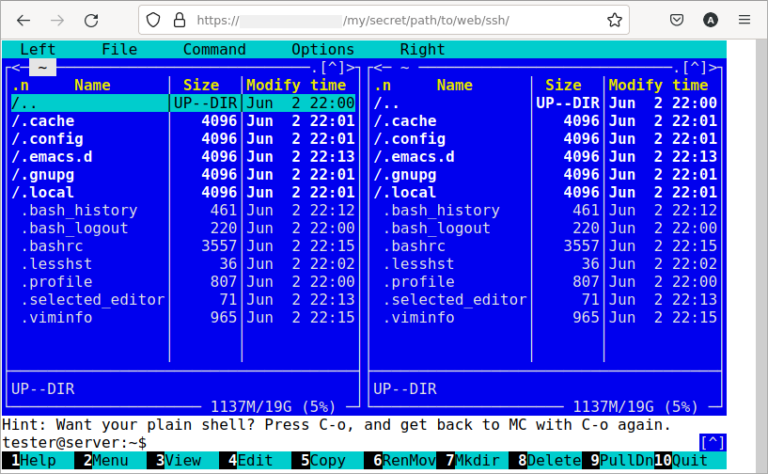5 models to solve different problems

Since the release of the first “raspberry,” various manufacturers have probably released several thousand models of single-board computers. And this flow does not decrease. Today’s selection includes five models that I liked and that I recommend you pay attention to. All the most interesting things are under the cut.
Do you like detective stories? Complete the quest “In Search of Missing Links”! Register on the site and try yourself in the role of a detective: find hidden links on the pages of Selectel and be the first to reach the final. Win exclusive merch and promotional code for Selectel services.
BeagleY-AI SBC

Small single board computer. Software hardware – open source. The device is equipped with a Texas Instruments AM67A Cortex-A53 quad-core vision processor with various programmable blocks capable of delivering up to 4 TOPS for artificial intelligence algorithms.
The board is well equipped. Inside there is 4 GB of RAM, plus a microSD memory card slot for storing data and loading the OS. Among other things, the device supports Gigabit Ethernet, W-iFi 6 and Bluetooth 5.4 and can control three displays via microHDMI, OLDI (LVDS) and MIPI DSI interfaces. It also has two MIPI CSI connectors, four USB 3.0 ports, a USB Type-C port, and a 40-pin GPIO header.
Detailed specifications
• SoC – Texas Instruments AM67A (J722S) “machine vision processor.” The processor is a quad-core 64-bit Arm Cortex-A53 with a frequency of 1.4 GHz. Arm Cortex-R5 subsystem for low-latency I/O and control. GPU and VPU – “GPU, video and vision accelerators, and other specialized computing capabilities.” DSP/AI Accelerator – C7x dual general purpose DSP with 4 TOPS Matrix Multiply Accelerator (MMA). High-speed interfaces – single-channel PCI-Express Gen3 controller, USB 3.1 Gen1 port, Gigabit Ethernet.
• System memory – 4 GB LPDDR4.
• Memory – microSD card slot, EEPROM board ID (4 Kbit).
• Display interface:
○ 1x micro-HDMI port;
○ 40-pin OLDI (LVDS) connector with touch screen support;
○ 22-pin MIPI-DSI with touch screen support (multiplexer with MIPI-CSI);
○ Up to three simultaneous displays.
• Camera Interface – 2 x 22-pin MIPI CSI camera connectors.
• Net:
○ Gigabit Ethernet RJ45 connector with Power-over-Ethernet (PoE+) support via add-on;
○ WiFi 6 and Bluetooth 5.4 via BeagleBoard.org BM3301 module based on TI CC3301.
• USB:
○ 4 USB 3.0 (5 Gbps) Type-A host ports;
○ 1x USB 2.0 (480 Mbps) Type-C port and power input.
• Extension:
○ 16-pin PCIe Gen3 x1 FPC connector;
○ 40-pin expansion connector.
• Debugging:
○ 3-pin console UART JST-SH;
○ 10-pin TAG-CONNECT JTAG connector.
• Power supply – 5V via USB Type-C port.

Unfortunately, this single-board device is not yet available; it will go on sale only in June 2024 at a price of $70.
MaaXBoard OSM93

Another small device, a single board PC based on the NXP i.MX 93 Cortex-M55/M33 AI SoC. Its dimensions are only 85 x 56 mm.

It also has a 40-pin GPIO header and a number of useful connectors. Comes with 2GB LDDR4, 16GB eMMC flash, MIPI CSI and DSI interfaces for optional camera and display modules, two Gigabit Ethernet ports, additional support for Wi-Fi 6, Bluetooth 5.3 and 802.15.4, three USB 2.0 ports and two CAN FD interfaces with built-in transceivers.

Detailed technical specifications
• SoC – NXP i.MX93:
○ Processor;
○ 2x Arm Cortex-A55 up to 1.7 GHz;
○ 2x Arm Cortex-M33 up to 250 MHz;
○ GPU – 2D GPU with blending/compositing, resizing, color space conversion;
○ NPU – 1x Arm Ethos-U65 NPU @ 1 GHz up to 0.5 TOPS.
• Memory – 640 KB OCRAM with ECC.
• Security – EdgeLock Secure Enclave.
• System memory – 2 GB LPDDR4 SDRAM.
• Storage:
○ 16 GB eMMC 5.1 flash memory;
○ 16MB QSPI NOR flash memory.
• Display interface – 4-lane MIPI DSI interface.
• Camera input – 2-lane MIPI CSI camera interface.
• Net:
○ 2 Gigabit Ethernet RJ45 ports;
○ Additional Wi-Fi 6, Bluetooth 5.3 and 802.15.4 via M.2 module (probably based on NXP iW612).
• USB – 2x USB 2.0 Host Type-A ports, 1x USB 2.0 Host Type-C port.
• Extension:
○ 40-pin Raspberry Pi HAT compatible header with UART, SPI, I2C, I2S and GPIO interfaces;
○ 4-pin ADC connector;
○ 6-pin CAN-FD connector (including CAN transceivers).
• Debugging – 10-pin JTAG connector, 2 x 3-pin console debug connectors.
• Miscellaneous – RTC battery connector location.
• Power supply: 5V/3A via USB-C port.
Milk-V Duo S

A tiny single-board device has gone on sale, costing only $11. Dimensions – 43 x 43 mm. But the developers managed to equip the device with Ethernet, USB Type-C and Type-A ports. There is also a card reader and two expansion connectors.
As for the cost, this is the price of the base model. There are also more advanced ones. Here is a complete list of what the manufacturer offers:
• Milk-V Duo S (without WiFi and main memory) for $11,
• Milk-V Duo S with WiFi 6 & BT 5 for $14,
• Milk-V Duo S with 8GB eMMC (no WiFi) for $16,
• Milk-V Duo S with 8GB eMMC, WiFi 6 & BT 5 & PoE HAT for $20.
Each model includes 512MB of DDR3 RAM and an SG200 processor. As for the processor, here are its characteristics:
• 1 x C906 RISC-V core @ 1 GHz,
• 1 x C906 RISC-V core @ 700 MHz,
• 1 x ARM Cortex-A53 core @ 1 GHz,
• 8051 6KB MCU,
• 0.5 TOPS NPU.
It is worth noting that you cannot use RISC-V and ARM cores at the same time. Instead, the device offers to choose which cores will be used at startup. In addition, you cannot use two USB ports at the same time. You will have to work alternately with either one or the other.
What else does the device offer:
• 2 2-lane MIPI-CSI connectors,
• 1 x MIPI-DSI, 4-lane connector,
• 39 GPIO connectors.
The board supports 5V/1A input voltage and has two hardware buttons. By the way, the Duo S has twice the RAM of the Duo 256M and four times more than the original Duo single-board.
Orange Pi 5 Pro

New interesting single-plate game. It is powered by Rockchip RK3588S 8-core 64-bit processor, A76 quad-core + A55 quad-core processor. The operating frequency can reach up to 2.4 GHz. There is an ARM Mali-G610, an integrated 3D GPU compatible with OpenGL ES1.1/2.0/3.2, OpenCL 2.2 and Vulkan 1.2. And also an embedded NPU that supports mixed INT4/INT8/INT16 computing with up to 6 TOPS power and can meet the edge computing needs of most end devices.
As for other specifications, it is 4GB/8GB/16GB LPDDR5 with up to 8K display processing and support for eMMC or SPI Flash module (any), Wi-Fi 5, BT5.0 and BLE support. There is also an HDMI output, GPIO ports, USB2.0, USB3.1, a 3.5 mm headphone jack, and a Gigabit LAN port with PoE support.
The single-board dimensions are only 89 x 56 x 1.6 mm. The device supports Orange Pi, Ubuntu, Android 12, Debian and other operating systems.
Radxa Rock 5C

And the last for today is a mini-PC the size of a credit card. It is based on the Rockchip RK3588S2 processor. The maximum configuration of the model is 32 GB of LPDDR4x RAM. PCIe 2.1 interface, Gigabit Ethernet, Wi-Fi 6 and Bluetooth 5.4 wireless communication module are also supported.
The device supports working with two 8K displays and the following interfaces at once:
• UART,
• SPI,
• PDM,
• 12C,
• PWM,
• GPIO.
The board costs $50, and the computer will go on sale on April 10.
What do you think about the new products? Maybe you know better candidates? Share your opinion in the comments!




